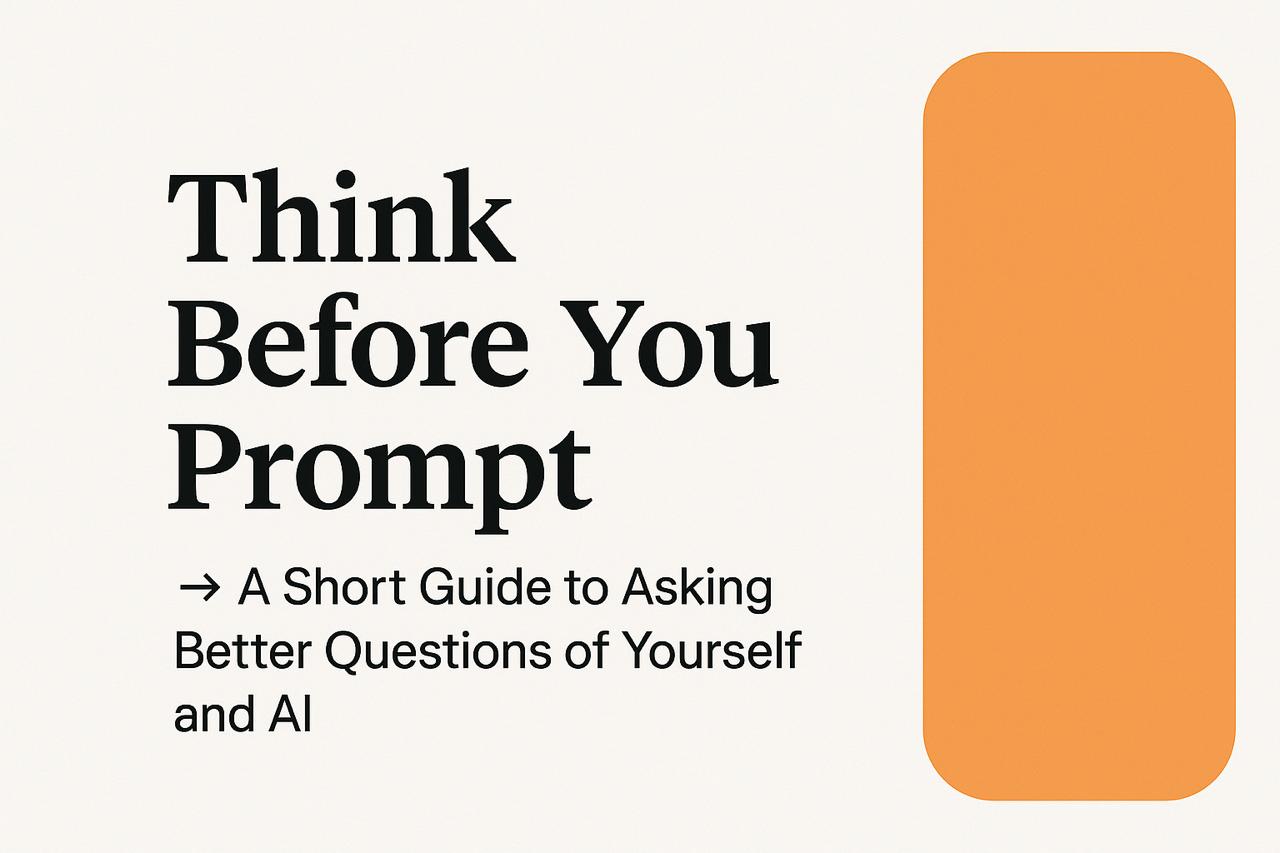→ A Short Guide to Asking Better Questions of Yourself and AI
In a world where artificial intelligence (AI) responds at the speed of thought, the quality of your questions matters more than ever. Whether you’re using ChatGPT, Claude, Gemini, or any other AI tool, how you prompt determines what you get back.
But here’s the twist: prompting isn’t just about getting better answers from AI—it’s also about getting better answers from yourself.
This short guide is your invitation to pause, reflect, and become more intentional about your questions—to both your inner voice and your digital assistants.
1. Start With the End in Mind
Before you prompt, ask:

Are you looking for clarity? Options? A full solution? A new perspective? Too many people open ChatGPT and say, “Help me with marketing,” but forget to specify what kind of help they need. The same goes for life and work.

Example (AI):
Instead of: “Help me write a business plan.”
Try: “Can you help me outline a one-page business plan for a tech startup that helps African farmers access global markets?”
Example (Self):
Instead of: “Why am I stuck?”
Try: “What patterns or habits in my daily life might be keeping me stuck professionally?”
2. Use Constraints to Unlock Creativity
Paradoxically, the more specific you are, the more creative your output can be. AI tools love constraints, and so does your brain.

Example (AI):
“Give me 3 ideas for a podcast targeting African entrepreneurs, no longer than 10 minutes per episode, and focused on real-life case studies.”
Example (Self):
“How can I create impact in just one hour per day over the next 30 days?”
3. Layer Your Questions
Just like peeling an onion, each layer of a question brings you closer to the heart of the matter. Don’t settle for the first answer—dig deeper.

Technique:
- Ask a broad question.
- Follow up with:
→ “What else?”
→ “What would that look like?”
→ “How might I test this?”
→ “What am I not seeing?”
Example:
Prompt 1: “How do I grow my personal brand?”
Prompt 2: “What platforms best match my audience?”
Prompt 3: “What small daily habit could strengthen my brand visibility?”
4. Challenge Assumptions
We often prompt from a place of bias. We assume we need more, faster, better. But what if we need less? Or something completely different?

Try This:
- “What would happen if I did the opposite?”
- “What if this problem isn’t the real problem?”
- “What would I ask if I weren’t afraid of the answer?”
5. Prompt for Action, Not Just Insight
It’s easy to use AI (and introspection) for endless ideas. But insight without execution is a distraction.

Instead of:
“What’s a good morning routine?”
Try:
“What’s a simple 20-minute routine I can commit to tomorrow that sets the tone for a productive day?”
Final Thought: Use AI as a Mirror, Not Just a Machine
When used well, AI doesn’t just give you answers—it helps you refine your thinking. In the same way, journaling or coaching reveals blind spots, AI can do the same—if you ask it the right way.
So next time you’re about to type in a prompt or question, pause for just 5 seconds.
Ask yourself:


The more intentional your questions, the more transformative the answers.
Want to practice? Try prompting this:
“Give me a weekly routine that helps me get better at asking questions.”
Or even better:
“What’s one small way I can use this article today?”


